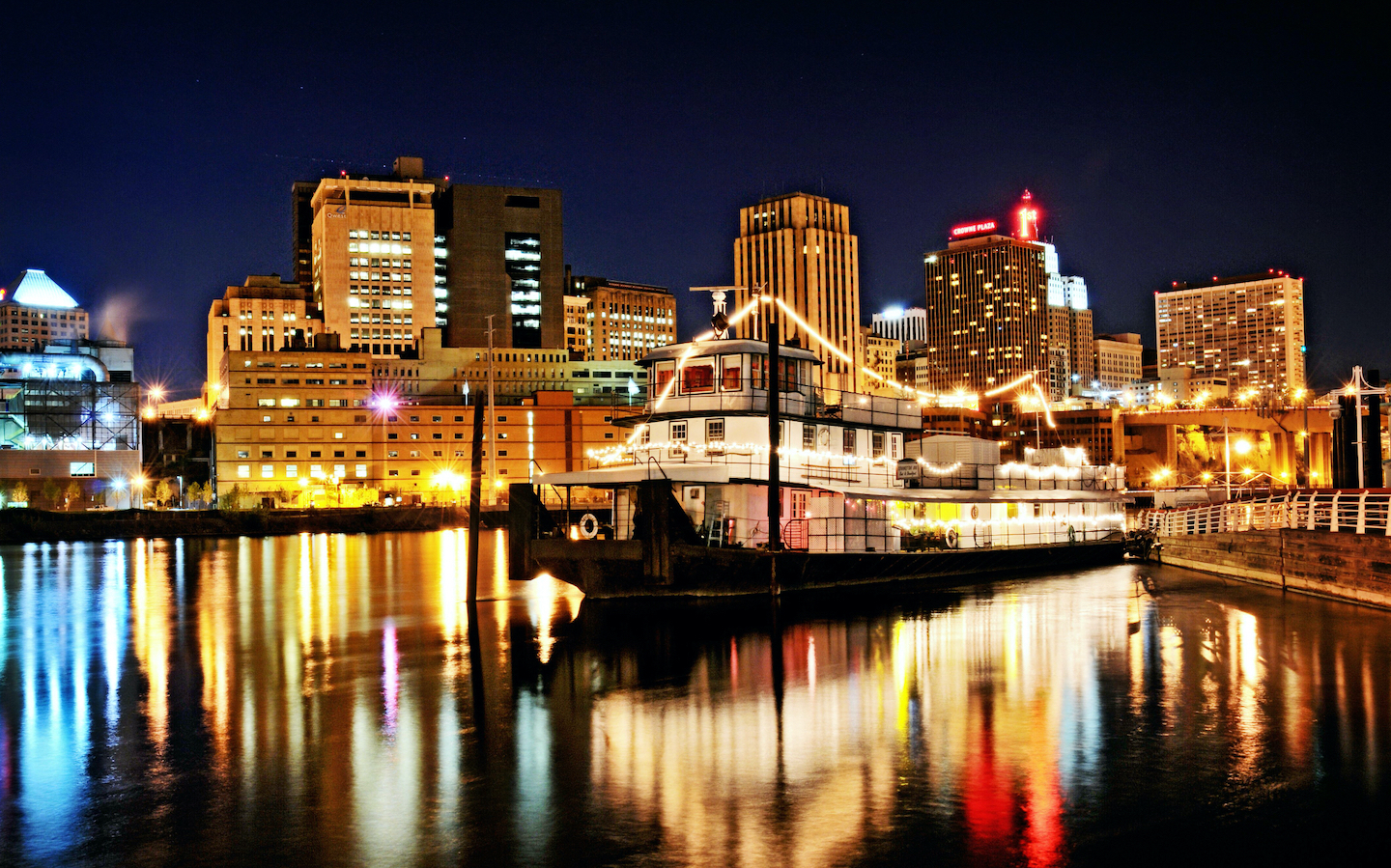The Ford Site Master Plan, adopted by the Saint Paul City Council in 2017, is the culmination of a decade of planning for the site. It provides a framework to guide mixed-use redevelopment of the 122-acre main assembly plant parcel and the adjacent 13-acre rail yard. It does not include the 22-acre river parcel (“Area C”).
The Ford Site Master Plan was subsequently amended several times. The most recent version is linked below.
Community Engagement and Adoption
Since 2007, the City has been seeking the community and other stakeholders’ visions and priorities for the Ford site. The thousands of ideas and suggestions that we have received over the past 10 years, and through more than 140 public meetings of all sizes, have shaped the redevelopment framework for the site.
Redevelopment Principles
The Ford Site will be a livable, mixed-use neighborhood that looks to the future with clean technologies and high-quality design for energy, buildings and infrastructure. The redeveloped site will support walking, biking and transit, and provide services, jobs and activities that every generation can enjoy.
Project Studies
A total of 14 professional studies conducted by the City and additional studies by Ford Motor Company have examined a wide range of topics, such as the potential of industrial reuse, a geotechnical analysis of the tunnels under the site, open space priorities, sustainable design, stormwater management, and traffic impacts.
Economic Impact
Office, research and development, medical, custom manufacturing, and other light-industrial employment uses are envisioned for the redeveloped Ford Site. Providing a range of employment along with housing and services at the future site will ensure that the site provides good economic value for the City and residents. At full build-out, the site is expected to provide 1,500 jobs.
Parks and Open Space
Following the City’s parkland dedication ordinance, the City can only legally require 9% of property to be designated specifically as parkland during rezoning, though a developer could decide to build more parkland than required by City ordinance. Additional land can be set aside for stormwater treatment (with park-like qualities) and public right-of-way (roads and sidewalks) in addition to the 9% parkland dedication ordinance.
Residential
It is anticipated that residential units on the future Ford Site will be a mix of ownership and rental, will vary in size and price, and will target different ages and household types. The City’s goal is to expand the mix of housing options in the City of Saint Paul and in Highland Park by better meeting the demand of housing for younger and older households, single-person households, and a variety of incomes. Providing affordable housing options as part of the overall housing mix will be important to creating a stable and healthy place, and the City will work actively with site developers and housing partners to do so.
Sustainability
The redeveloped Ford site will advance the key elements of sustainability -- economic, environmental and social. It will be a livable, mixed-use neighborhood that looks to the future with clean technologies and high quality design for energy, buildings and infrastructure. The site will support walking, biking and transit, and provide jobs, services, housing and activities that every generation can enjoy.
Transportation
The City of Saint Paul hired nationally-recognized professional transportation analysis firms Nelson/Nygaard, SRF Consulting and Utile to conduct a transportation study on how the Ford Site could develop without straining the traffic system in the surrounding neighborhood. This study was conducted to inform the framework for the site and was calculated using maximum resident and visitor calculations to take a conservative approach.
Zoning
Zoning are local rules that identify how land can be used and developed. Previously the Ford Site was zoned for light industrial development, which focuses on uses such as manufacturing, light industry and warehousing. Previous studies of the site have indicated that the site is not attractive to today’s industrial businesses due to limited transportation access, land prices, and the way the city has developed around the site.
